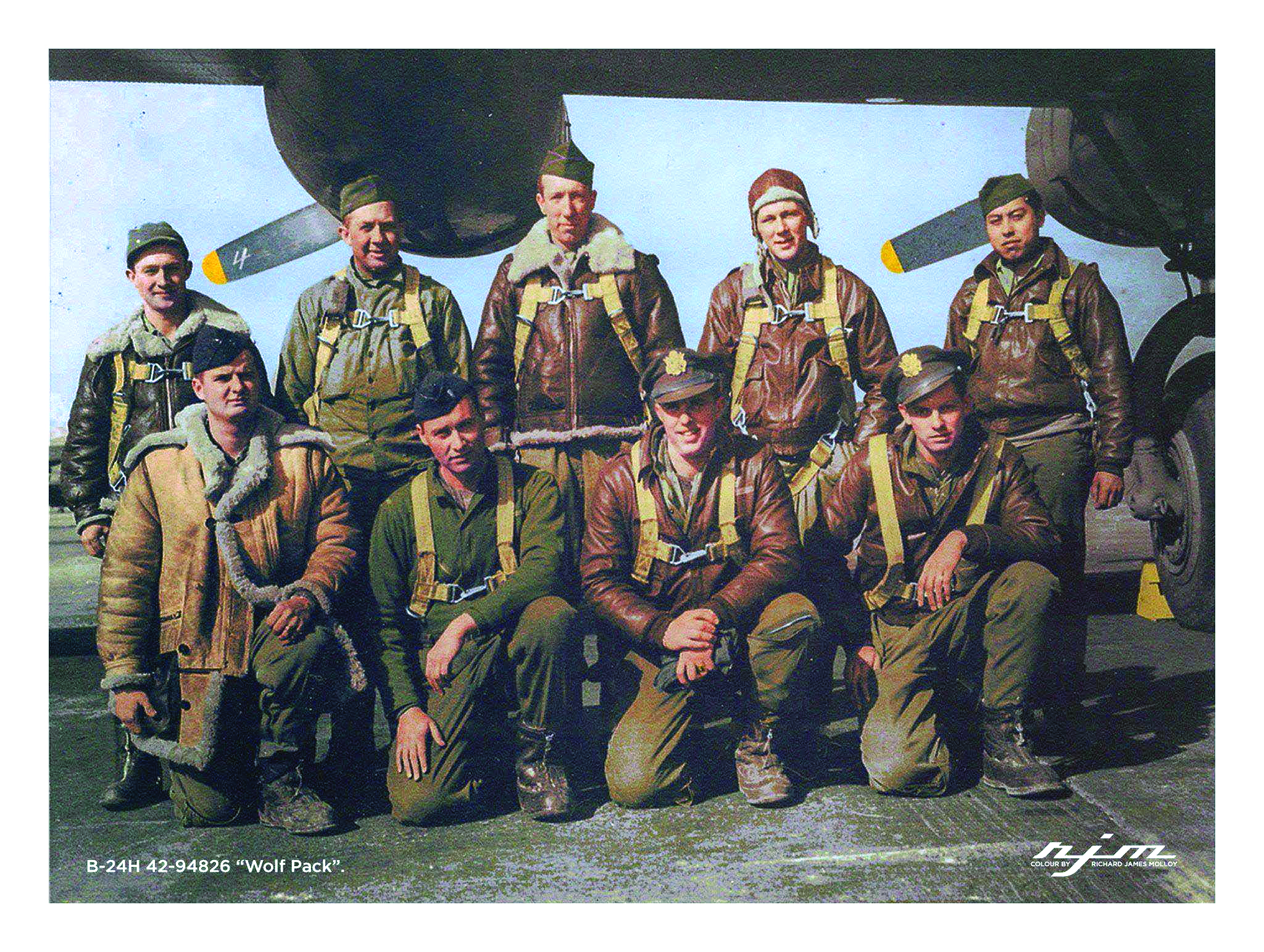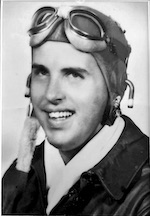Remains of Missing World War II Hero Found
By Mary Ann Thomas (Copyright ©, Pittsburgh Post-Gazette, 2023, all rights reserved. Reprinted with permission.)
William B. Montgomery was stunned when he received a call in January confirming that remains found along the English coast were those of his uncle and namesake, a World War II pilot whose plane was lost June 22, 1944.
“I just started crying,” said Mr. Montgomery, 76, who lives in Georgia.
First Lt. William B. Montgomery W & J ’38, a Washington & Jefferson College football star and later its baseball and track and field coach, was 24 when his plane went down.
“I couldn’t believe 79 years and they found him,” said Mr. Montgomery, who is his uncle’s oldest living relative.
Phi Psi Connection
A Zoom call with the U.S. Defense POW/MIA Accounting Agency (DPAA), floored Mr. Montgomery once again.
He was told that investigators had found a ring at the crash site, the only personal effect of his uncle’s that was discovered. Mr. Montgomery identified the ring from Phi Kappa Psi Fraternity, where Lt. Montgomery had been the fraternity [chapter] president.
“It was a complete surprise when they gave it to me …” he said. The agency sent a captain from Fort Benning to give him the ring.
Lt. Montgomery can be seen wearing the ring in an undated photo of him with the crew of his B-24H Liberator bomber, nicknamed “Wolf Pack.”
The ring is a little bent up but is an unexpected family treasure for Mr. Montgomery. He already had some of his uncle’s military medals, including a Purple Heart, and more medals will be awarded during the funeral for his uncle.
“God bless the U.S. Army for finding my uncle. Who else would do that? It’s phenomenal,” he said. “It makes me proud.”
His uncle’s remains were identified at an Army forensic lab and will be flown to Washington, D.C., for burial at Arlington National Cemetery.
“We are allowed to be on the tarmac when they bring the casket off the plane and then he goes to a funeral home,” Mr. Montgomery said.
Mission and Recovery
Lt. Montgomery was assigned to the 844th Bombardment Squadron in the summer of 1944, according to a DPAA press release.
His nephew was unsure how many missions his uncle flew in Europe, but he had been in the Army Air Forces for nearly two years when his plane crashed.
After bombing a German airfield in France, Lt. Montgomery’s plane was hit by anti-aircraft fire. Despite damage to the Liberator, Lt. Montgomery flew the plane to the English Coast then ordered his crew to bail out. Lt. Montgomery and two other crew members stayed aboard while seven other airmen parachuted out.
Some surviving crew members said they saw the plane crash into a farm field in West Sussex, England, according to DPAA.
The Army’s American Graves Registration Command searched the area around the crash site but found no remains. The Army declared Montgomery as “non-recoverable” on May 10, 1950.
Mr. Montgomery said the death of the promising 24-year-old was a family tragedy that may have contributed to the early death of Lt. Montgomery’s father, Charles T. Montgomery, an executive at Pittsburgh Plate Glass. He died less than a year after Lt. Montgomery’s plane went down.
Although he never met his uncle, Mr. Montgomery heard the stories.
“My uncle was the best athlete of the family,” Mr. Montgomery said. He was the quarterback and captain of W&J’s football team and earned varsity letters in football and track before graduating in 1942 with a political science degree.
“My dad and my Aunt Mary Montgomery [Lt. Montgomery’s sister] just adored him,” he said. Mr. Montgomery’s father, Thomas Braden Montgomery, was an Army lieutenant serving in Europe when his brother was killed.
“My dad didn’t talk about the war that much, he just talked about the end of the war,” Mr. Montgomery said.
Lt. Montgomery was identified because of renewed government efforts to find and confirm the remains of U.S. soldiers.
“Although the American Graves Registration Command did initially begin accounting [for] unknowns for WWII immediately after the war, we did not actively pursue WWII accounting efforts until 2010,” said Ashley Wright of the DPAA.
An aviation archaeology group did some excavation at the crash site in 1974. The Telegraph of England reported that an amateur historian researched and pinpointed the crash site in the 1970s.
DPAA conducted an investigation and recovery mission at the site in 2017 and 2019. In June 2021, possible human remains and other evidence was uncovered. Using forensic science including mitochondrial DNA, DPAA identified Lt. Montgomery. Mr. Montgomery said investigators found fragments from his uncle’s left arm and compared them to DNA from another family member.
The confirmation of Lt. Montgomery’s remains allows for closure of his military service. A rosette, indicating that he is accounted for, will be placed next to Lt. Montgomery’s name on the Wall of the Missing at Cambridge American Cemetery, an American Battle Monuments Commission site in Cambridge, United Kingdom.


